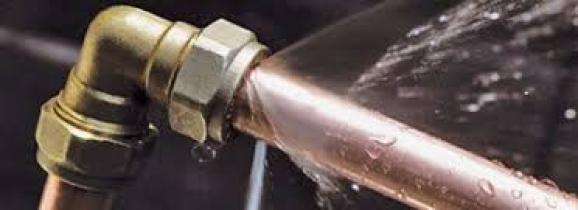The author is making several great annotation regarding Top Causes of Home Water Leaks overall in this article following next.

Leaks not only create waste of water yet can additionally cause unneeded damages to your residence as well as promote unwanted organic growth. Sadly, water leakages might go unnoticed because the majority of the pipework in our house is hidden. By looking as well as understanding for day-to-day scenarios that trigger leaks, you can protect your residence from future leakages as well as unneeded damages. Today, we will look at 6 leak causes that might be causing your pipelines to leak.
Trespassing origins
Many water leaks start outside your house as opposed to inside it. If you notice a sudden decrease in water pressure, state in your tap, take some time to go out as well as examine your yard. You might notice damp spots or sinkholes in your lawn, and that might mean that tree roots are attacking water lines triggering water to seep out. You can have your plumber check for intrusion, specifically if you have trees or bushes near your property.
Rusty water supply
This may be the cause of staining or warping on your water pipelines. If our plumbing system is old, take into consideration changing the pipelines given that they are at a greater risk of deterioration than the more recent models.
Faulty Pipeline Joints
The factor at which your pipes link is regularly the weakest web link in the waterline. Pipeline joints can degrade gradually, resulting in water leakages. Unfortunately, most of pipe joints are not conveniently noticeable. If you have loud pipes that make ticking or banging noises, particularly when the hot water is turned on, your pipe joints are most likely under a lot of pressure. It is suggested to have your plumber examine your system yearly.
Instantaneous temperature adjustments.
Severe temperature modifications in our pipelines can create them to increase and contract all of a sudden. This development and contraction may create cracks in the pipes, especially if the temperature level are listed below cold.
Poor Water Connectors
At times, a leakage can be triggered by loose hose pipes and also pipelines that supply your home appliances. In case of a water links leak, you might see water running straight from the supply line or puddles around your devices.
Blocked Drains
Blocked drains could be bothersome and inconveniencing, yet they can sometimes end up creating an overflow causing burst pipelines. Keep getting rid of any materials that might drop your drains that might block them to stay clear of such inconveniences.
All the above are root causes of leaks but not all water leaks result from plumbing leaks; some leaks may originate from roofing system leaks. All leakages need to be fixed right away to prevent water damages.
Leakages not only trigger waste of water however can likewise trigger unnecessary damage to your house and promote undesirable natural growth. By looking and comprehending for day-to-day scenarios that trigger leaks, you can protect your house from future leakages and also unneeded damages. Today, we will look at six leakage triggers that may be triggering your pipes to trickle.
At times, a leakage can be caused by loosened hose pipes and pipes that provide your devices. In instance of a water connections leakage, you may observe water running directly from the supply line or puddles around your home appliances.
How To Check For Water Leak In Your Home
How To Check for Leaks
The average household's leaks can account for nearly 10,000 gallons of water wasted every year and ten percent of homes have leaks that waste 90 gallons or more per day. Common types of leaks found in the home are worn toilet flappers, dripping faucets, and other leaking valves. These types of leaks are often easy to fix, requiring only a few tools and hardware that can pay for themselves in water savings. Fixing easily corrected household water leaks can save homeowners about 10 percent on their water bills.
To check for leaks in your home, you first need to determine whether you're wasting water and then identify the source of the leak. Here are some tips for finding leaks:
Take a look at your water usage during a colder month, such as January or February. If a family of four exceeds 12,000 gallons per month, there are serious leaks.
Check your water meter before and after a two-hour period when no water is being used. If the meter changes at all, you probably have a leak.
Identify toilet leaks by placing a drop of food coloring in the toilet tank. If any color shows up in the bowl after 10 minutes, you have a leak. (Be sure to flush immediately after the experiment to avoid staining the tank.)
Examine faucet gaskets and pipe fittings for any water on the outside of the pipe to check for surface leaks.
Undetected water leaks can happen without the home or business owner even realizing. If you suspect a water leak, but not able to find the source. It is time to contact a professional water leak detection service, The Leak Doctor.
How To Find a Water Leak In Your Home
https://www.leakdoctor.com/blog/How-To-Check-For-Water-Leak-In-Your-Home_AE197.html

I stumbled upon that page on Most Common Causes of Leaky Pipes while looking around the internet. Sharing is good. You never know, you could be helping someone out. Thanks so much for your time spent reading it.
Excellence in emergency plumbing services.
Comments on “The House's Common Common Leak Triggers: Examination”